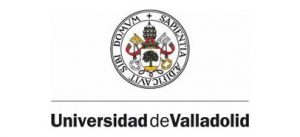Valladolid University – Inter-institutional agreement
There are three hypotheses about the origins of the University of Valladolid. A very spread tradition fixes its birth in the relocation to Valladolid of the Estudio General de Palencia, considered the first University in Spain and created between 1208 and 1241 by Alfonso VIII, king of Castile and the Bishop Tello Téllez.
Some people think the birth of the University center in Valladolid is located in a school or in a particular study with headquarter in The Abadía de Santa María la Mayor. However, the most recent researches defend the royal and municipal creation of the University. As it appears in the documents of salaries donation to the new Study, the Castilian Monarchs were its creators and the council of Valladolid acted as intermediary of the foundation.
The University of Valladolid was a reality in the last quarter of the 13th century and it enjoyed the protection of the crown and, later, the Papacy. In short, a royal and pontifical university which deeply roots in The Castilian Middle Ages. In 1292, Sancho IV gave the Study of Valladolid the tercias of Valladolid and its small villages, as well as other salaries for its maintenance. Around the same dates, in 1293, Sancho IV created the Estudio General de Alcalá by following the model the study created in the city of Pisuerga years ago. It is about an intellectual impulse which is produced in parallel to the material flourishment and progress in big cities and Castilian councils, from which Valladolid appears as a very importance example.
In principle, in the Study of Valladolid they were taught the most basic disciplines: Grammar, Arithmetic and a little bit of Latin and Holly scripture. Later the villa obtained the royal and pontifical favor for its emerging learning center. In 1346 the Pope Clement VI, at the request of Alfonso XI, transformed into General the Studies of Valladolid. However, the University of Valladolid lacked then theological science, an exclusive privilege of the University of Paris. On the verge of finishing the division of the occidental Church, in 1417, Martin V granted the villa the desired faculty. In parallel, the Castile Monarchs granted the study with salaries, particularly the royal tercias coming from the archpriesthood of Cevico and Portillo, which allowed it a relative economic independence.
As a result they were fixing the basis of the future magnificence of the Valladolid Alma Mater. In the 16th century it was declared, along with the University of Salamanca and Alcalá, as one of the Biggest Universities of the Kingdom. The organization of the Study is improved, the first statutes in Latin (1517) are created and romance statutes are later drafting in detail. The Faculty of Law, strengthened by the presence of the Chancery, gains a great importance; and it happens the same with the Faculty of Medicine, a highly Hippocratic center. Shortly before, at the end of the 15th century, the Cardinal Mendoza had founded the Colegio de Santa Cruz (1481), an institution assigned to the university education which it first equalized, and later, led the glory of other Castilian centers. Its students, educated with personal care, obtained relevant jobs in the administration and courts of the Kingdom.

